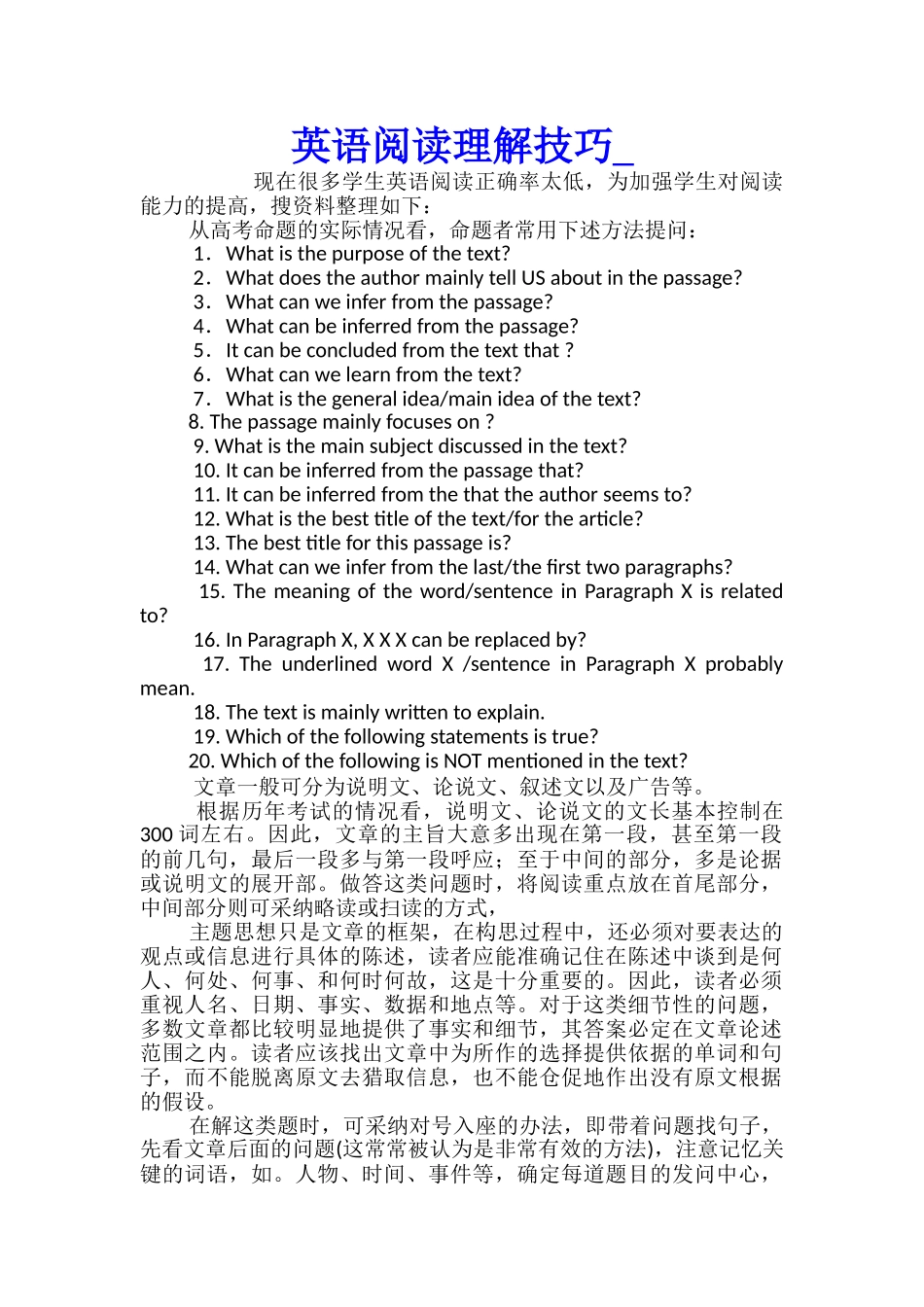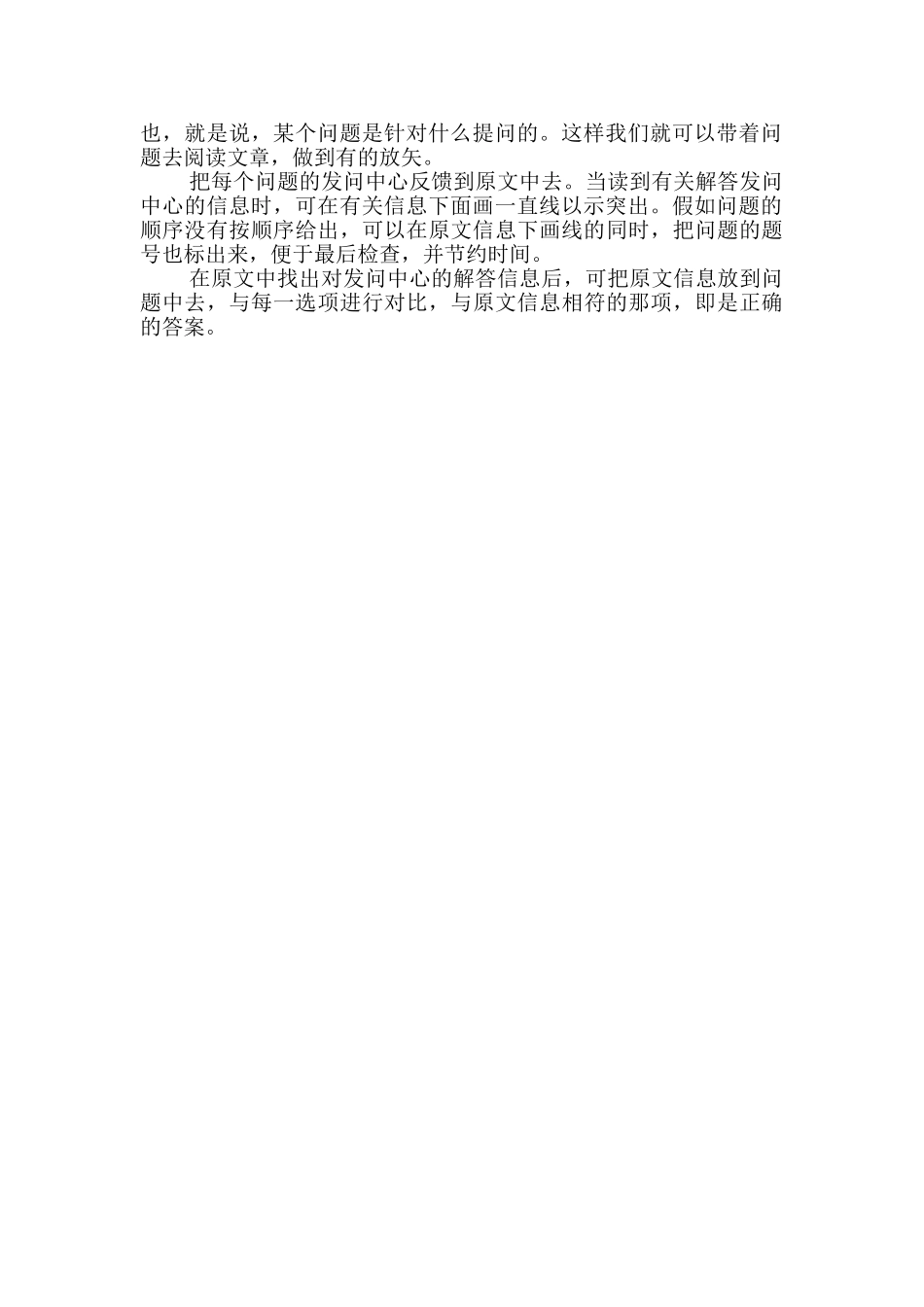英语阅读理解技巧_ 现在很多学生英语阅读正确率太低,为加强学生对阅读能力的提高,搜资料整理如下: 从高考命题的实际情况看,命题者常用下述方法提问: 1.What is the purpose of the text? 2.What does the author mainly tell US about in the passage? 3.What can we infer from the passage? 4.What can be inferred from the passage? 5.It can be concluded from the text that ? 6.What can we learn from the text? 7.What is the general idea/main idea of the text? 8. The passage mainly focuses on ? 9. What is the main subject discussed in the text? 10. It can be inferred from the passage that? 11. It can be inferred from the that the author seems to? 12. What is the best title of the text/for the article? 13. The best title for this passage is? 14. What can we infer from the last/the first two paragraphs? 15. The meaning of the word/sentence in Paragraph X is related to? 16. In Paragraph X, X X X can be replaced by? 17. The underlined word X /sentence in Paragraph X probably mean. 18. The text is mainly written to explain. 19. Which of the following statements is true? 20. Which of the following is NOT mentioned in the text? 文章一般可分为说明文、论说文、叙述文以及广告等。 根据历年考试的情况看,说明文、论说文的文长基本控制在300 词左右。因此,文章的主旨大意多出现在第一段,甚至第一段的前几句,最后一段多与第一段呼应;至于中间的部分,多是论据或说明文的展开部。做答这类问题时,将阅读重点放在首尾部分,中间部分则可采纳略读或扫读的方式, 主题思想只是文章的框架,在构思过程中,还必须对要表达的观点或信息进行具体的陈述,读者应能准确记住在陈述中谈到是何人、何处、何事、和何时何故,这是十分重要的。因此,读者必须重视人名、日期、事实、数据和地点等。对于这类细节性的问题,多数文章都比较明显地提供了事实和细节,其答案必定在文章论述范围之内。读者应该找出文章中为所作的选择提供依据的单词和句子,而不能脱离原文去猎取...

